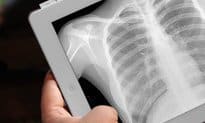UK dose registry ‘at planning stage’
- 23 June 2014

The UK is a world leader in radiation dose monitoring, but work on a national dose registry is still at a planning stage.
At the UK Radiological Congress in Manchester, speakers discussed the current status of dose monitoring – recording and using information on how many doses of radiation a patient has received at different times – and where it is heading in the future.
Sectra product manager Ian Judd said the UK radiology sector is “very mature” in its collection of data and education of radiographers about dose limits.
“The UK is probably the leader in terms of maturity and approach and attitude, and the rest of the world is looking in on what we’re doing and coming to this way of thinking.”
Judd said the focus has now shifted to making better use of the data collected to proactively monitor dose levels, equipment and staff to improve dose reduction.
“A focus on technical dose reduction of CT scanners can only get you so far. You need to step back and take a more holistic view of the process, all the way from request to report, because that’s where we can really save a lot of patient dose.”
Sharing information more effectively by linking data from a regional dose tracking system to a hospital’s electronic patient record also helps to prevent duplicate requests at different hospitals, he said.
Judd said “the jury is out” on the concept of dose passports, where patients are provided with details of the doses administered to them, due to concerns about whether they can interpret the information accurately.
“The patient does have a right to know what’s being done to them, but you don’t want to frighten them off, because you do want them in for a breast cancer screening next year, so it is quite a delicate balance in doing this.”
Battin said the American College of Radiology’s dose index registry, set up in 2011, is set up in 949 of the country’s 3,300 hospitals and has already had an impact on dose levels.
In November, the DH announced (http://www.ehi.co.uk/news/acute-care/9023/new-working-party-on-dose-monitoring) that it was setting up a working party on dose monitoring with the eventual goal of setting up a national registry.
Sue Edyvean, the head of Public Health England’s medical dosimetry group, said the work on a registry is still in the early stages.
“There are plans for professional body discussions to see how we do this, and how we use this massive amount of data that can provide much more useful information, but we’re still only working at the beginning of the process,” she said.
Mike Battin, the chief operating officer at PACShealth, said improved dose monitoring can also have financial benefits for trusts by reducing waste and extending the life of equipment.
“If you’re reducing patient doses by 18%, you can probably get a CT tube life improvement of somewhere between zero and 18%.”




